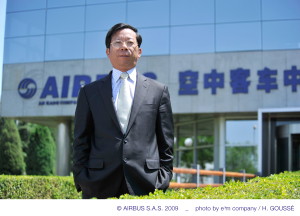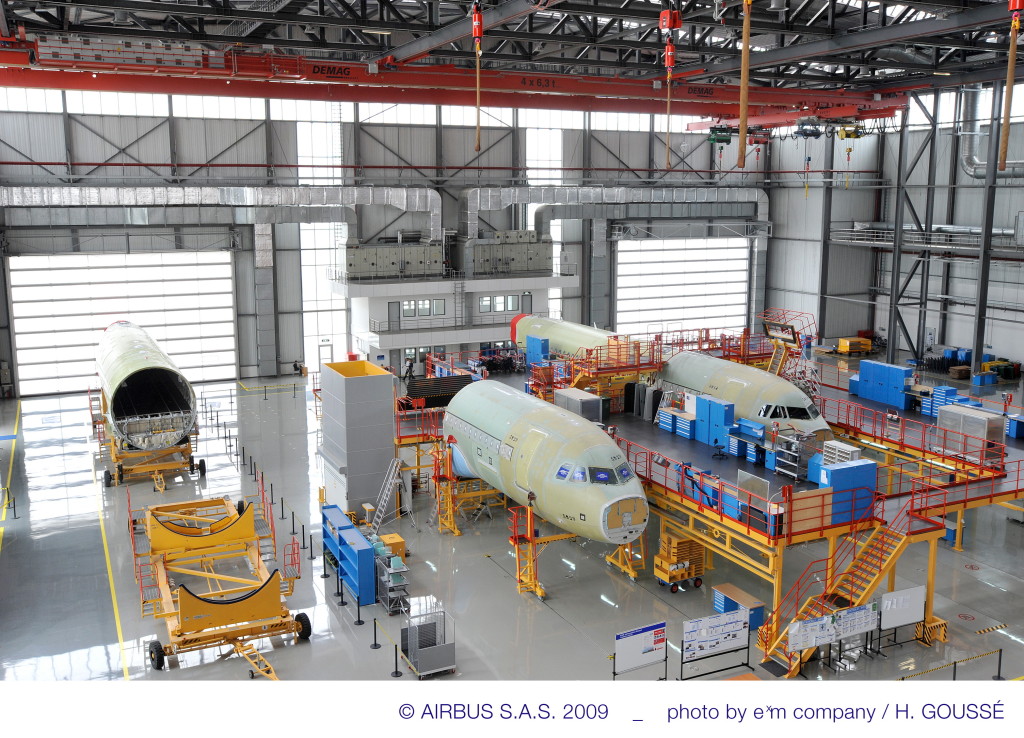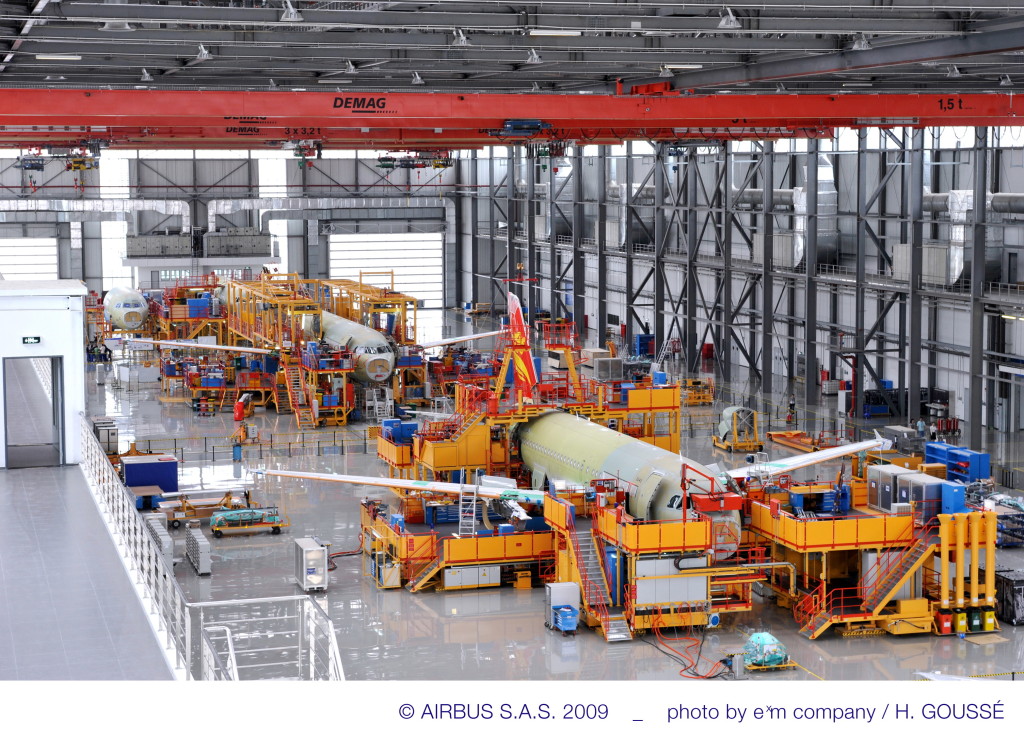From the delivery of their first aircraft 28 years ago until the present day, Airbus’ operations in China have grown impressively. Today they are a major European success story. President and CEO of Airbus China Eric Chen speaks with EURObiz’s Carl Hayward to highlight some of their milestones and discuss some of the factors behind Airbus’ accomplishments in China — balancing the right products with the right strategy.
History
Chen, who joined Airbus in 1994 as Sales Director, says that Airbus’ success in China can be largely attributed to a combination of offering the right products for the market, which have played a role in helping the growth of China’s air traffic sector, and the company’s strategy of cooperating with the Chinese aviation industry. He says Airbus successfully capitalised on the opportunities produced by the growth of the Chinese civil aviation industry, which was a result of the country’s reform and opening up policy adopted in the 1980s.
Chen became the president of Airbus China on 1st January, 2013, and is now responsible for Airbus’ overall activities in the PRC.
From 1980−2013, the regulatory landscape of China’s aviation industry has witnessed enormous change. China’s civil aviation was separated from the military in 1980 to be managed by the State Council.
“From the late 80s to the late 90s, six regional civil aviation administration bureaux were set up to oversee civil aviation. During this same period six airlines were established. Now, in the new century, airlines are managed as modern enterprises and are more market oriented,” says Chen.
In the early stages of China’s period of opening up, their aviation industry was not very strong. Airbus only had the A300 and A310 on the market so the conditions for fully entering China were less than ideal. In fact Airbus had entered the Chinese market as early as 1985 when they delivered the first A310 to China Eastern Airlines, but they didn’t actually establish the Airbus China Company Limited until 1994. The A320 became available in China one year later.
Since operations began in earnest, Airbus has gone on to form four joint ventures (JVs) in China: the Hua-Ou Aviation Training and Support Centre and the Airbus (Beijing) Engineering Centre (ABEC), both located in Beijing; the Airbus 320 Final Assembly Line China (FALC) located in Tianjin; and the Harbin Hafei Composite Manufacturing Centre in Harbin.
Additionally there are two Airbus subsidiaries, the Airbus (Tianjin) Delivery Centre and Airbus (Tianjin) Logistics. They also have some 20 field service locations in more than 10 cities around China through which they deliver onsite customer services and technical support. In total Airbus and its JVs employ more than 1,200 staff in China.
Opened in mid-2005, and initially operated as a wholly-owned foreign enterprise (WOFE), the main function of ABEC is to execute design work for Airbus’ current and future Aircraft programmes. From 2008, it became a JV between Airbus China Limited (70 per cent), Hafei Aviation Industry Company Limited (HAI, 18 per cent), Jiangxi Hongdu Aviation Industry Company Limited (seven per cent) and China Aviation Industry Corporation I (five per cent).
The FALC was established in June 2007 when Airbus signed a JV with a Chinese Consortium comprising Tianjin Free Trade Zone and the Aviation Industry Corporation of China (AVIC I and AVIC II). This facility was opened on 28th September, 2008.
By the end of May 2013 there were some 920 Airbus aircraft on the Chinese Mainland, operated by 15 commercial airlines, two cargo airlines as well as 11 private operators of corporate jets.
This number of aircraft makes up half of China’s total civil air fleet, representing a dramatic increase from 20 aircraft, or six per cent of the total air fleet, in 1995. The target, Chen says, “is to get at least half of the market share in terms of in-service fleet. The next step is to become a real market leader.”
FALC
Initially it was important for Airbus to bring European expertise to its China operations. The FALC initially employed some 120 European workers in the early days. Chen says that this was in order to ensure that the “Airbus way” was followed. But since this initial period, the number of expats employed has now reduced to around 20. Chinese staff have received rigorous training in China and Europe to become qualified for their jobs, not just in technical aspects, but also in management.
As its first final assembly line outside of Europe (Airbus also operates lines in Toulouse, France and Hamburg, Germany) the FALC represents a major development for Airbus. Chen says that it had originally been requested by the Chinese Government, and a memorandum of understanding (MOU) was signed between Airbus and the National Development and Reform Commission (NDRC) on 5th December 2005.
This MOU expressed the desire to establish a “process to evaluate the new fields of enhanced cooperation, including the possibility to establish a Final Assembly Line for Airbus single aisle aircraft in China.” The JV, realised just over three years later, is described by Chen as a “win-win solution” and has been supported by the government.
“Airbus focuses on the quality of the aircraft assembled in Tianjin, the same FAL structure, the same process, the same standard, the same jigs and tools. Chinese partners focus on mobilising local resources to support the project, such infrastructure, local talent, logistics, the Customs process, and other things to be done for the smooth operation of the FAL,” Chen says.
Although experiencing some challenges in communication between people from different cultural backgrounds, Chen says that the aircraft assembled in Tianjin are at least as good as those assembled in Europe.
The current output of four aircraft per month is actually less than the market demand, but is the highest agreed rate according to the business plan agreed between the two JV parties. To date more than 130 aircraft have been assembled and delivered to operators in Tianjin.
The FALC draws on a global supply chain which poses some logistical challenges. Most of the sections for final assembly — for all Airbus assembly lines — are put together in Europe. Sections for the FALC are transported to Hamburg and then loaded onto ships and arrive in China by sea.
This is the first time in aviation history that aircraft parts have been shipped by sea, and Chen says that their shipper, COSCO, “has developed some innovative ways to fulfil the task.” In order to satisfy airworthiness requirements for aircraft section transportation, COSCO transport each section by a set of specialised jigs and tools, which was manufactured by the Tianjin-based TST company.
Some manufacturing processes take place on Chinese soil, however. For example, most of the wings for FALC are actually manufactured and equipped by Xian Aircraft International Corporation (XAIC). They manufacture the wing boxes and transport them to their factory in Tianjin, where the wings are equipped and tested before being transported to FALC to join to the fuselage.
Industry commitment
Airbus’ Hua-Ou Aviation Training and Support Centre provides training to Chinese and foreign pilots, cabin crew, maintenance technicians, performance/operations personnel and structural technicians. Since 1997 it has trained more than 24,500 people. Training for pilots is a particularly important aspect, as Chen says “if no pilots can fly your aircraft, you cannot sell any to the market.”
Beyond this practicality, the training also introduces pilots to the Airbus fly-by-wire system, an innovation that was first introduced to Airbus A320s in the 1980s. This system features in all of Airbus’ aircraft resulting in cockpits on all models of aircraft that are almost identical. The advantage to this is that pilots can remain current on more than one category of aircraft without supplementary takeoff/landing requirements, recurrent training and annual checks. Crew training and conversions are shorter and simpler making this system highly cost-effective for airlines.
Outside of assembly and training Airbus are involved in helping China to develop the aviation industry overall. They jointly organise an annual aviation summit with the NDRC, which provides a platform for NDRC officials with responsibility for the aviation industry to communicate with top Airbus executives.
This is interspersed with bi-annual seminars organised for high-level Civil Aviation Administration of China (CAAC) officials. Through such channels Airbus is able to keep Chinese officials up to date with new concepts and developments in the aviation industry in Europe and, Chen says, this information “can be used as a reference when they draft the plan for the development of the Chinese aviation industry.”
Seminars are also organised which target those in charge of fleet planning. Chen believes that their commitment to helping to plan for sustainable development of China’s civil aviation sector emphasises to Chinese officials Airbus’ long-term commitment to China.
Airbus has also cooperated with the CAAC and Chinese airlines on Required Navigation Performance (RNP) which has helped China to develop air transport in the remote and less developed western regions, especially the Himalaya area. It is due to the support of Airbus that China is a global leader in terms of RNP application. The A330 was the first RNP-certified, wide-body aircraft in the world and the first wide-body to fly with a RNP system over Tibet. Today, more 80 per cent of commercial flights to the Tibetan-Qinghai plateau are flown by Airbus aircraft.
Airbus forecasts that China will need around 4,000 new aircraft over the next 20 years, and Chen believes that Airbus is well placed to earn its share of the pie:
“We have a highly motivated and professional team in China. We provide our Chinese customers with comprehensive aircraft families that can satisfy their needs in every segment. We have built up an excellent customer relationship in this market — a forward-looking, long-term relationship based on the win-win principle and the mutual trust we have built between us and our customers,” Chen says.
“Our major strength also includes our cooperative relationship with Chinese aviation, from materials procurement to joint ventures that include the final assembly line in Tianjin. We will continue to pursue this proven strategy for further growth in China.”





Recent Comments